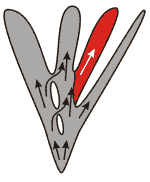 Animals
Animals
Eukaryotic organisms without the possibility of photosynthesis (with the exception of fungi, which are traditionally grouped together with the plants).
Animals and plants belong to the large group of eukaryotes. The main difference between the two groups is the endosymbiosis of the precursors of plant cells with photosynthetic bacteria resulting in the evolution of chloroplasts. Some unicellular algae and a number of multicellular plants lost the ability for photosynthesis during their later evolution. In contrast to the definition given above, these organisms are grouped together with the photosynthetic plants. In addition, the non-photosynthetic fungi are included in the plant group, due to a number of features they are sharing with plants.